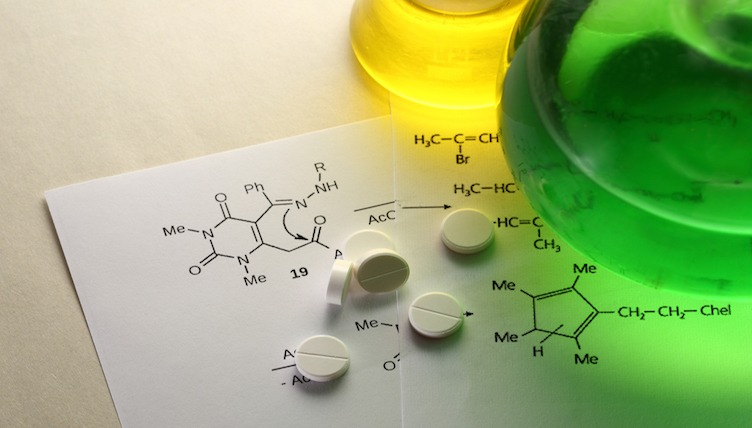Industry, FDA Meet Over Nitrosamine Impurities in APIs
A joint industry group of innovator and generic-drug makers and consumer healthcare companies met with the FDA to go over the challenges the industry is facing in implementing a FDA guidance for risk assessments of all chemically synthesized APIs for nitrosamine impurities? What was discussed?
Nitrosamine impurities in APIs and drug products
Last week (July 19, 2021), the US Food and Drug Administration posted minutes of a May 2021 meeting with the agency and a joint industry group of innovator and generic-drug makers and consumer healthcare companies to discuss implementation of the FDA’s guidance, Control of Nitrosamine Impurities in Human Drugs. The FDA had issued the guidance in September 2020 and later revised it in February 2021 to recommend the steps manufacturers of active pharmaceutical ingredients (APIs) and drug products should take to detect and prevent unacceptable levels of nitrosamine impurities in pharmaceutical products. The guidance also describes conditions that may introduce nitrosamine impurities. The agency issued the guidance due to the unexpected finding of nitrosamine impurities, which are probable human carcinogens, in certain drugs that have resulted in further agency investigations and company recalls over the past three years. In 2018, the FDA and the European Medicines Agency initiated investigations of nitrosamine impurities in certain “sartan”-containing APIs, used in anti-hypertensive and cardiovascular drugs, such as valsartan, candesartan, irbesartan, losartan, and olmesartan. They later broadened those investigations into prescription and over-the-counter forms of ranitidine, a H2 (histamine-2) blocker used to decrease the amount of acid created by the stomach, and later metformin extended-release products, drugs to treat Type II diabetes. The guidance specified the need for a risk-assessment strategy for potential nitrosamines in any pharmaceutical product at risk for their presence.
The meeting was attended by representatives for the Association of Accessible Medicines (AAM), which represents generic-drug manufacturers, the Pharmaceutical Research and Manufacturers of America (PhRMA), which represents innovator, research-based bio/pharmaceutical companies, and the Consumer Healthcare Products Association (CHPA), which represents manufacturers of nonprescription (i.e., over-the-counter) products, as well as the FDA.
Industry challenges
As a collective group, AAM, PhRMA and CHPA in the form of a joint industry group outlined the challenges that the industry is facing with respect to the implementation of the guidance and testing for nitrosamine impurities and risk assessments. These issues are highlighted below.
International harmonization of nitrosamine impurity standards. The joint industry group pointed to a lack of international harmonization between the principles articulated in guidelines from the International Conference on Harmonization of Technical Requirements for Pharmaceuticals for Human Use (ICH) and the FDA’s guidance. The group pointed to the ICH’s guideline, M7(R1), Assessment and Control of DNA Reactive (Mutagenic) Impurities in Pharmaceuticals to Limit Potential Carcinogenic Risk, which the FDA’s nitrosamine guidance references, and the FDA’s nitrosamine guidance. In addition, the group pointed out that not all nitrosamine acceptable intake levels are set according to ICH M7 guidelines, which causes inconsistencies in various regulatory regions. For example, M7 permits calculation of acceptable intake limits based on less-than-lifetime exposure, but the FDA uses a more conservative approach.
Variance in acceptable intake levels. The joint industry group pointed out that different dosage forms with the same API may have different nitrosamine acceptable intake limits. In addition, they pointed out that many nitrosamines associated with complex drug products do not have acceptable intake limits because of the lack of genotoxicity data.
Cost and operational challenges.The joint industry group pointed to several issues with regard to testing, both operationally and in costs. The group noted that testing can yield “false positives” and necessitates the use of expensive equipment for example, liquid chromatography and mass spectrometry analytical testing methods. The group said that testing raises challenges, but the burden could be reduced if regulatory agencies established nitrosamine acceptable intake levels for drug products with insufficient toxicity data. Additionally, the group said that significant resources are needed to create risk assessments, which cause delays in getting products to market, and that testing for nitrosamines impurities is expensive and uses resources that could be available for research and innovation. The group also pointed to the impact of the testing burden on suppliers that are inexperienced in collecting this type of data.
Suggestions from the industry
Moving forward, the joint industry group provided several suggestions to address the challenges it faces. First, it is advocating for consistency in the principles applied by international regulatory agencies to address nitrosamine impurities, with clear and consistent recommendations. It is also asking that regulatory agencies reduce the burden on industry by focusing on those products with the highest risk.
It also suggested several elements with regard to testing data: (1) inclusion of treatment duration in acceptable intake calculations; (2) mutagenicity testing, such as the Ames test, to be used to demonstrate the lack of a risk to patients; (3) using predictive mutagenicity software to identify acceptable intake limits; and (4) molecular weight considerations by applying a default acceptable intake (AI) (molar AI) for compounds with a related structure.
The joint industry group is asking the FDA to work with industry to advance science on these issues. It is also calling for a joint FDA-industry public workshop to further the discussion on nitrosamine Impurities.
A detailed question-and-answer session with the FDA and industry representatives to gain clarification of several key issues relating to risk assessments and nitrosamine impurities, including inspection activity and obligations of sponsor companies and contract manufacturers, may be found here.






